The fourth hole at the Golf Club of Houston is a 565-yard par 5 that doglegs left with a deep bunker threatening a wayward drive and water daring a second-shot approach. Like the rest of the course, the hole is pristine with its neatly manicured grass as green as the pines that line the fairway.
It’s here on the tee box where we find Anthony Kim, the 38-year-old Korean-American golfer who has re-emerged into the world of professional golf, teeing up in his sixth tournament since his return. It so happens that Kim is playing the same course where he claimed his last professional victory before walking away into golf obscurity 12 years ago, leaving a promising career and prompting so many “what ifs?”
Golf, though, has a funny way of grabbing hold and never letting go.
On the opening tee box, Kim stands out among his peers — whether intentionally or not — with his untucked black polo shirt, his khaki shorts, his black crew socks riding up his calf, and his ponytail hanging out the back of his hat. He’s joined by Phil Mickelson, the six-time Major winner and the world’s former second-ranked golfer, dressed in shorts and a tucked-in polo. And there’s Paul Casey, the Englishman dressed in more old-school golf attire: a polo shirt tucked into perfectly pressed pants despite the heat of the 95-degree-plus day.

But Kim’s distinct appearance is okay because the game has drastically changed since he disappeared. Back then, a single professional tour dominated the sport, the PGA Tour, which featured the world’s best golfers, all dressed in neatly tucked polos, long pressed pants, and hats muddled with sponsors as they clashed for four days for weekly winnings.
Kim was once a rising star of that elite group, and he played a game so lethally that it was only matched by the swagger he carried on the course. He finished second in his inaugural professional tournament, quickly rose to the sixth-ranked player in the world, silenced the world’s best in head-to-head matches, and carried such a charismatic charm on the course that all combined people believed he could be the next Tiger Woods.
These days, though, the LIV Golf tour has upended the professional landscape as it’s poached some of the sport’s best players with multi-million-dollar payouts to defect to a start-up league fronted by Saudi billionaires — the revenant Kim among them.
As Kim tees his ball to open the first round at the Golf Club of Houston, he appears calm, focused, collected. Perhaps because for the first time in his life he’s playing golf for the fun of the game. The speakers booming music behind the tee box — another LIV specialty — transitions to a countdown to open the round.
10…9…8…
A deep breath…
7…6…5…
A practice swing…
4…3…2…
Another breath…
1…
Showtime!
Kim approached his ball with an air of confidence as a crowd of 100-plus people watched him rocket a ball down the fairway, a shot reminiscent of the old days, proving that while life is fleeting, raw talent is inherent.
“Let’s go, AK!” a fan yelled.
Kim, walking off the tee, smiled.
Tiger Woods was dominating professional golf when Anthony Kim first arrived 2006, but the sport was seeking a fresh face to compete with the world’s best golfer. Kim had the game and the charm, but also a reputation as a man who loved to drink and gamble and party with his growing entourage.
It's one he carried since college, where he starred for the University of Oklahoma golf team, but also butted heads with his coaches for his extracurriculars off the course. His coaches once said Kim did everything 150 percent — whether it was practicing, playing, or partying.
His results on the course were hard to argue. Kim set the school’s record for lowest scoring average in relation to par (71.73). He was a three-time All-American. The 2005 Big 12 Champ. The 2004 NCAA Freshman of the Year. And he was once named the top-ranked collegiate golfer in the nation by both Golfweek and Golf World.
Kim found golf at an early age growing up in California. Born Anthony Ha-Jin Kim, his parents raised him: Miryoung, the supportive mother, and Paul, the demanding father. Kim says his dad’s expectations were “brutal” as a young kid, but ultimately made him a better player. By 9 years old, Paul dropped Kim off at the local golf course with $10 in his pocket for lunch. Kim would practice next to celebrities on the driving range, like Clint Eastwood, or sometimes he would hustle golfers on the putting green and double his money. Can you imagine opening your wallet to pay a 9-year-old?
By 16, Kim was showing real promise, so his family moved from the concrete jungle of Los Angeles out east to La Quinta, a town featuring six courses and practice facilities that allowed him to flourish and earn a full ride to Oklahoma.
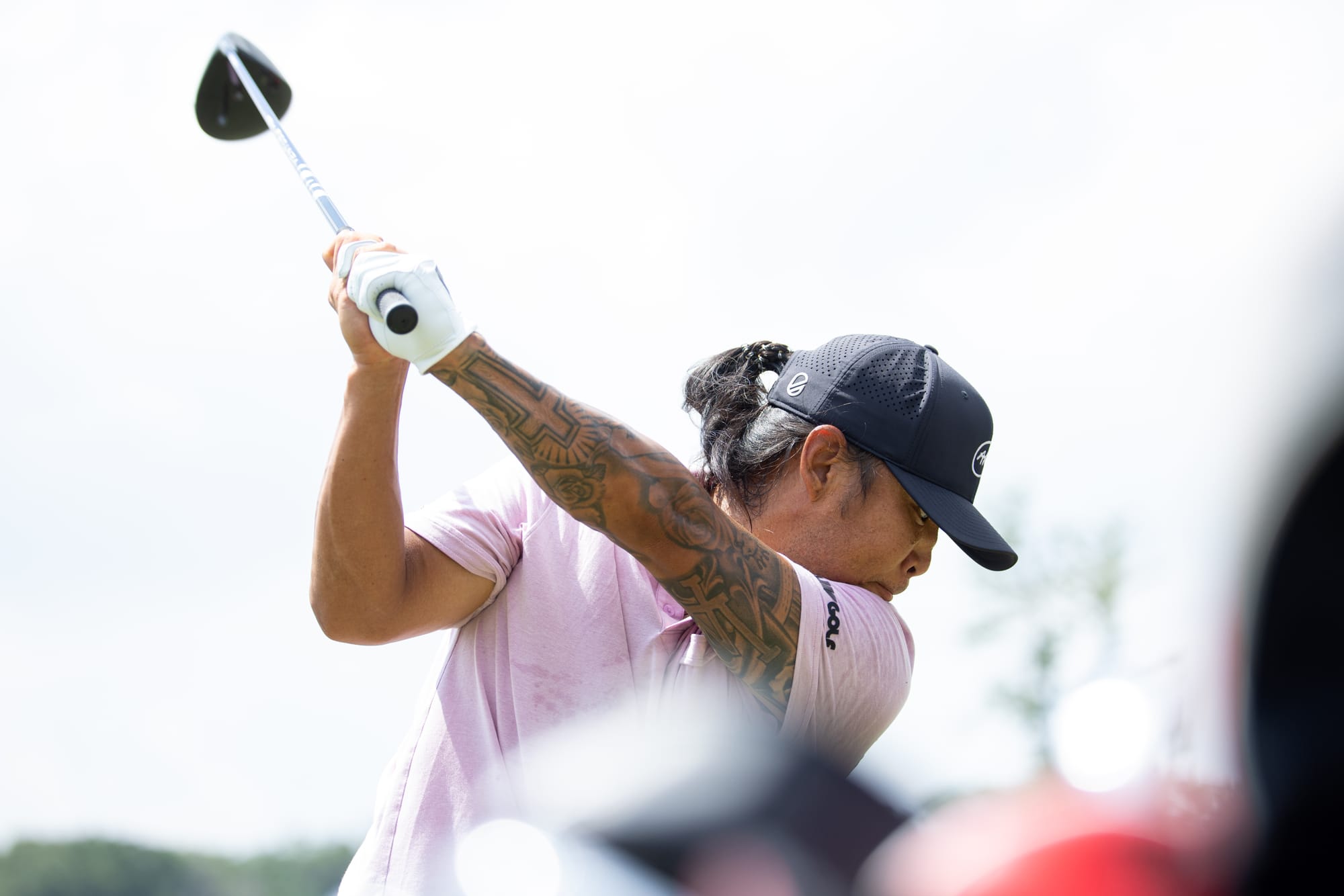
After college, Kim was living in his swing coach’s basement with no money, casually hanging around the game at the local country club, with no real path to the PGA. Then came a call from the Valero Texas Open in San Antonio asking if he would accept a sponsor’s exemption to play in the tournament. Kim packed his small Acura with all his belongings, his girlfriend, and his 70-pound pitbull and high-tailed it to Texas.
Kim posted four straight rounds in the 60s (69-68-66-65) for a 12-under 268, good enough for a three-way tie for second and three shots off the leader. It couldn’t have come at a better time. Kim was $3,000 in debt to his bank. His second-place payout was $298,000.
“It changed my life. It gave me the confidence to know I could be out there playing, because I didn’t play great,” Kim said on a recent podcast.
Kim was quick to splurge: a $60,000 chain with his signature “AK”, a new Cadillac Escalade with 20-inch rims. He spent it all — at a time he didn’t have a place to call home.
Kim expected that his second-place finish would lead to more sponsor exemptions and more PGA tournaments, but his phone was silent for the next three months. If he wanted to play in the PGA Tour, he would have to go through qualifying school and earn a tour card.
“I was screaming at everybody,” Kim says. “Nobody gives a shit when you don’t have your card.”
Turns out, people start listening when you start winning.
Kim breezed through Q-School and earned his Tour card while partying at clubs, buying bottles of tequila and champagne. His finish at the Texas Open left him confident that he could party and play at a high level; that when it came to winning on Tour, “This shit’s going to be easy.”
In his rookie season, Kim had four top-10 finishes and finished in a tie for 27th at the U.S. Open, one of golf’s four biggest tournaments of the year.
In his second year on tour, in 2008, Kim built a reputation as an aggressive player who fired at the challenging pins with an aura of cockiness as big as his blinged-out belt buckles.
Kim won his first PGA tournament, the Wachovia Championship, in May by five shots, then claimed his second title weeks later at the AT&T National, a tournament hosted by Woods.
During match play later that year at the Ryder Cup, a tournament that features the best Americans playing against the best Europeans, Kim dominated Sergio Garcia and helped the Americans claim their first title in nine years.
“The AK of 2008 was so impressive,” Mickelson told Sports Illustrated in 2014. “He had guts. He wasn't afraid of anyone or anything. He had every shot, and he just kept coming, making birdie after birdie.”
Kim’s ascent continued into 2009 when he set a record with 11 birdies at The Masters, another of golf’s major tournaments.
But his meteoric rise as one of the game’s best came to a screeching halt. His body was beaten down as birdies turned to bogeys as he began missing cuts and losing the swagger that fans relished. Word spread throughout the Tour of his drinking and drug problems. Kim was well aware of the whispers, and today admits he avoided spending time with players on Tour due to his addictions.
“If Kenny [Perry] ... was like, ‘Hey, come to dinner with me and my family,’ I would be like, ‘Well, I’m going to be nine tequila shots in by the time I get to dinner,” Kim said recently on a podcast. “I don’t want to make you feel uncomfortable. I don’t want to make your wife feel uncomfortable.

“I could possibly make a scene. … I was rolling with 14 people, right? That’s just part of the deal. And I had people that were just as big or bigger degenerates than me that made scenes, and I couldn’t control them.”
Even with the injuries and the partying, Kim found intermittent success the next two seasons. He won the 2010 Shell Houston Open, held at the Golf Club of Houston, a victory that placed him in the history books as one of five players in the past 30 years to win three PGA tournaments before age 25.
By 2012, the injuries and partying and mental health struggles all caught up to him. Kim withdrew from the Wells Fargo Championship in May due to injury. It was the third straight tournament he didn’t finish.
After the tournament, Kim released a statement saying, in part, “I’ve tried to play through the injuries, but I know from experience that it will only make matters worse. I’m going to get it looked at and do what I need to do to get back to full health.”
And with that, Kim ghosted the golfing world.
Months after walking away from the game, Kim found himself at home in Dallas, making a startling realization: he may never play again. Kim was still hobbled after a surgery to repair his ruptured Achilles. His house had three rooms filled with golf clubs, balls, shoes, gloves and hats. If he wasn’t going to play again, why did he need all this stuff?
He texted a hundred or so people for an impromptu flash sale: Whoever gets here first on Saturday gets to keep it all.
“Once I realized after my surgery that it was gonna be possible that I don’t play again, I was completely okay with that,” Kim says.
He says his life was already spiraling, though he’s been coy with the details. He’s declined to discuss the specifics about the demons he faced, his addictions — the drinking, the drugs, the gambling — or his struggles with depression, citing a future tell-all documentary he’s helping produce.
But, he says, he was surrounded by “snakes,” people who were using him “for their benefit.”
“I’m not going to lie, I was around some bad people,” Kim said in a recent interview with David Feherty for LIV Golf +. “People that took advantage of me. Scam artists. And when you’re 24 or 25, even 30 years old, you don’t realize the snakes that are living under your roof.”
The details of Kim’s life during those 12 years are sparse, and speculation ran rampant about whether he would ever return. Rumors swirled online of rare Kim sightings in public, whether at a restaurant or a driving range. Unverified stories circulated that Kim had signed a nine-figure deal to return to golf while Kim was at home binging a TV show with no plans of playing. By all accounts, Kim had become golf’s Bigfoot.
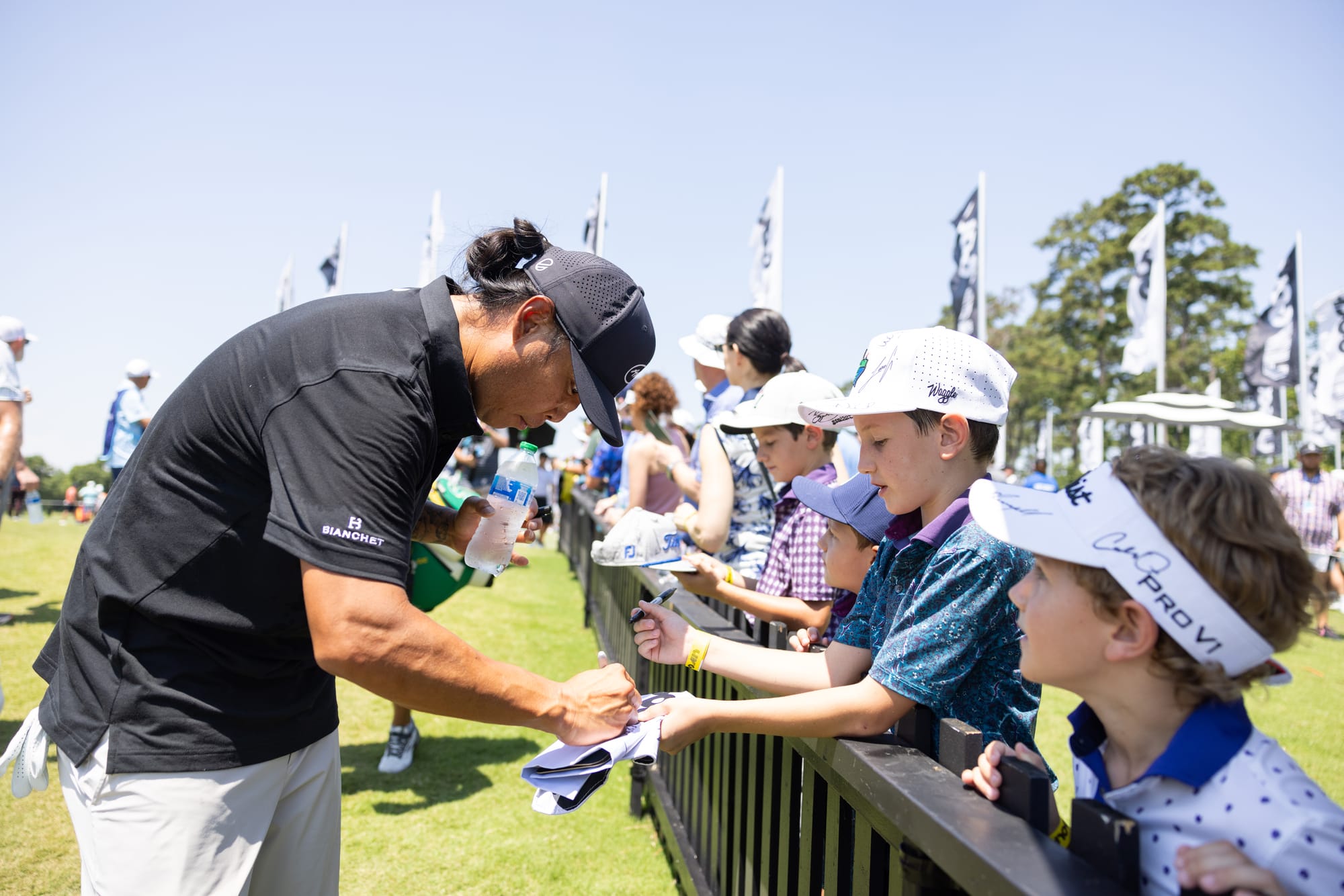
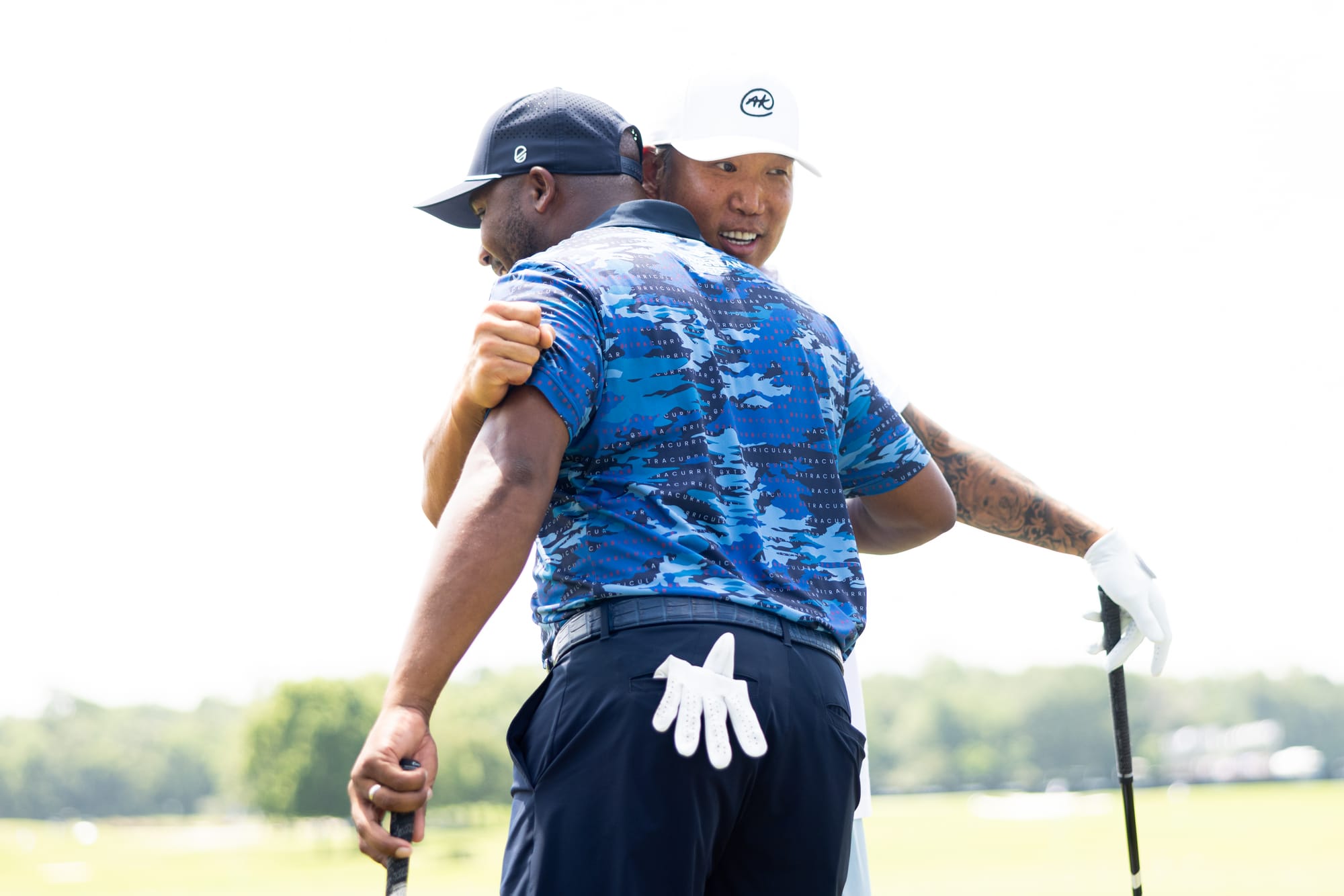
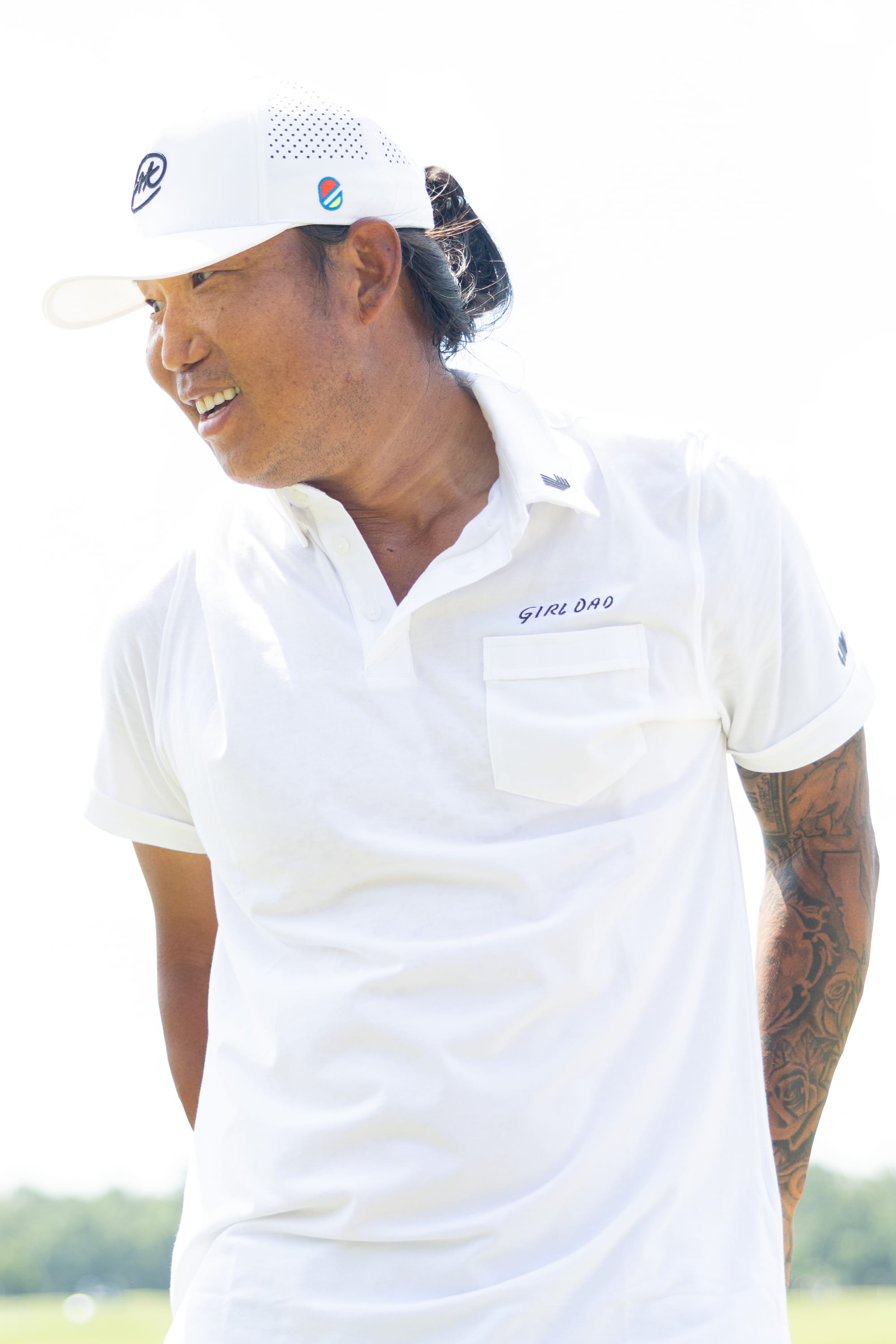

Since his return, Kim says he's finding a love for the game for the first time in his life. [Photos: LIV Golf]
Kim always had a tumultuous relationship with golf. He admits that he never truly loved the game and only played to earn enough money to help his mom retire.
There was the pressure of living up to one of the game’s best, of not letting his parents down who had sacrificed so much for him, of his culture as a strong Korean-American who doesn’t show weakness or vulnerability and while proving he can succeed.
At the height of his career is when he felt most alone, none more so than when he won his first tournament.
“I never thought, ‘Wow, you’re doing a good job. I always was just really down on my life,” Kim said on a podcast. “Nothing changed. Only more bullshit. More snakes. More guys just trying to get into your life for their benefit.
“I wasn’t living a life I was proud of."
As his injuries mounted during his playing days, Kim made a smart move: he took out an insurance policy that would pay out between $10 and $20 million if doctors determined he could no longer play golf. As news of the policy spread, so did rumors that Kim walked away from golf to cash in and never work again. Though Kim says he’s not at liberty to discuss the details of the policy or its payout, he says he was aware of the public perception at the time — none of which was true.
He had multiple surgeries to repair his broken body: multiple shoulder surgeries, hand surgery, a spinal fusion, his Achilles.
“My body still isn’t what it used to be,” he says.
While he repaired his body, he was facing mental battles of issues he had cast aside for years with drinking, drugs and partying.
Up until a few months ago, Kim still believed he would never play golf again. But then his wife, Emily, told him she wanted to learn to play. At first, Kim drove the golf cart, played deejay, and entertained their two-year-old daughter while Emily played nine holes four or five times a week. Occasionally, Kim would pick up one of Emily’s clubs with the pink grips and make a few practice swings. Then came the creeping thoughts: Maybe I could do this again.
But even those were short-lived.
Not long after, Kim was playing regularly with his wife. During one round, he hit a wayward shot across a creek and attempted to jump. Not a wise decision for his 38-year-old brittle body. He broke his ankle. Another injury, another cast. Golf, he figured, was done.
Then the calls came. The PGA Tour. The LIV Tour. Was he interested in returning to professional golf?
For so long, golf was such a distant memory. He didn’t follow the game other than to turn it on to fall asleep. He only heard of Tiger Woods’ epic win at the 2019 Masters in passing, didn’t know that Brooks Koepka won back-to-back majors in 2018, and had no clue about the new rules of the game.
But for the first time, Kim could see a path back. He’d gone through rehab, therapy, and cut out 98 percent of the snakes who clung to his fame. He and Emily had Bella after multiple pregnancy scares and Kim being told he may never have kids because of the damage to his body.
That’s all in the past, and Kim says he has a purpose in life that he never had before. The same with a support system of people he trusts to help him steer away from the bad decisions that could have cost him his life.
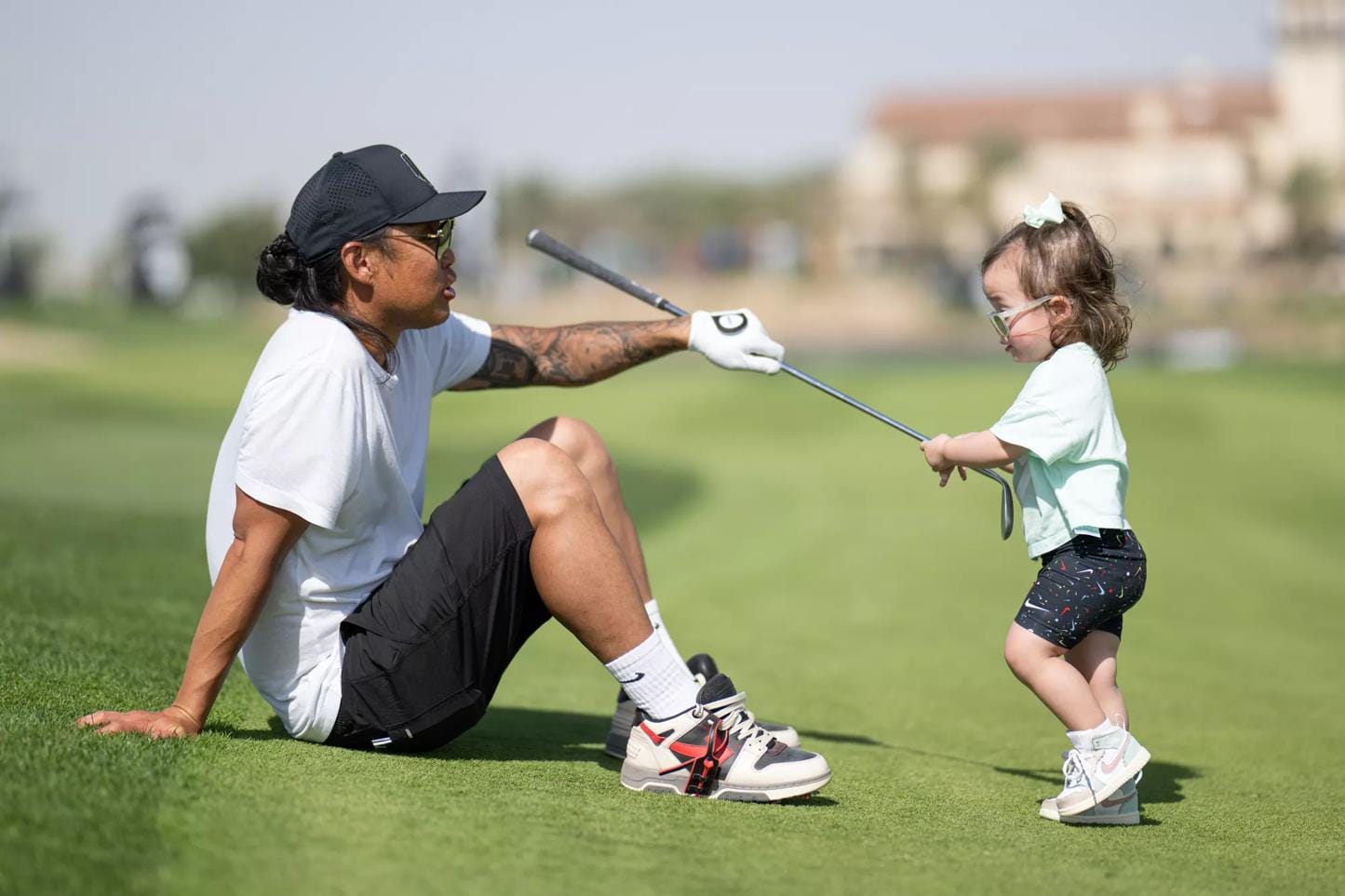
After years of soul-searching and talks with his family, Kim agreed to step back into the game. He joined the LIV Golf League in February and made his professional debut in Saudi Arabia weeks later.
"It’s been a long time coming, and I’m very grateful for all the highs, lows and lessons learned from the first part of my career,” Kim said announcing his return. “I want to compete with the best players in the world, and I’m on a mission to prove to myself that I can win again. The next step on that journey starts now.”
LIV Golf Commissioner and CEO Greg Norman said Kim’s talent is still “undeniable.”
“It’s clear that he has the fire to win again and show why he was one of the most compelling players in the world,” Norman says.
Kim has finished near the bottom of the leaderboard in every tournament he’s played thus far, though he’s shown flashes of dominance that once carried him to such great heights.
Playing in the blazing summer sun in Houston, fans flocked to tee boxes and greens to get a glimpse at the man who ghosted the golfing world, only to return a man who’s calm, confident and — maybe for the first time — at peace.
“Let’s go, AK!” fans regularly yelled.
Anthony Kim couldn’t help but smile.
Advertising and sponsorship opportunities are available. Contact Jim Hoos at jhoos@r1s1sports.com or 602-525-1363.